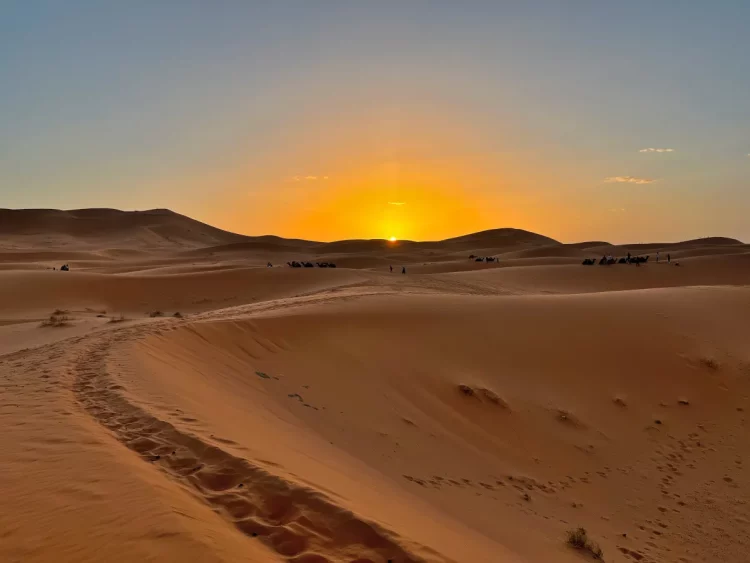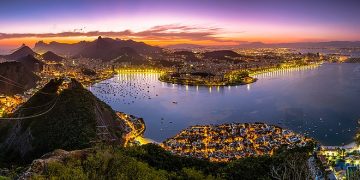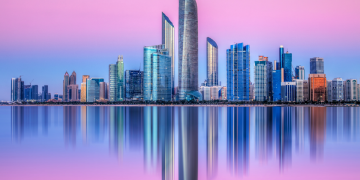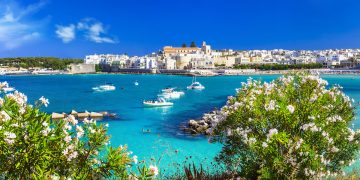From Survival to Splendor: The Transformation of the Sahara Experience
In 2025, the Moroccan desert is no longer just a symbol of harsh beauty and nomadic endurance—it has become a destination for immersive, Instagram-worthy luxury. What was once a sparse tent and a fire beneath the stars has evolved into a curated oasis where Berber heritage meets five-star indulgence. The red dunes of Erg Chebbi and Erg Chigaga now frame gilded canvas pavilions equipped with private hot tubs, Wi-Fi, solar-powered lighting, artisanal furnishings, and multi-course Moroccan gastronomy. Luxury travelers from Europe, North America, and the Gulf states are arriving not just for the novelty of sleeping under desert skies, but for the fusion of elegance and elemental connection. This isn’t a case of rustic authenticity being lost—it’s a redefinition of desert travel that embraces cultural roots while reimagining comfort. In the span of a decade, desert tourism has turned from endurance travel to immersive ritual, blending style, sustainability, and the spiritual allure of space and silence.
The Rise of the Desert As a Destination, Not a Detour
Traditionally, the Sahara was a stopover—a ticked box on a longer Moroccan itinerary. Travelers would pass through Merzouga or Zagora en route to Marrakech or Fes, staying one night in a basic tent, riding a camel at sunset, and returning with a few windswept photos. But in 2025, this narrative has completely changed. Desert travel is now the highlight, not the footnote. Boutique tour operators such as Desert Whispers and Sahara Bloom design entire journeys around a multi-night stay in luxury camps, integrating wellness rituals, photography sessions, culinary experiences, and silent sunrise meditations into every itinerary.
Tented lodges like Azalai Desert Camp and Scorpion Sands have set the new standard with curated interiors that rival urban riads—handwoven Berber carpets, brass lanterns, wood-burning stoves, and bathrooms finished with tadelakt plaster. Rather than retreating into tourist kitsch, they’ve embraced local craftsmanship and environmental awareness, earning the attention of luxury travel magazines and responsible travel platforms alike. The desert is no longer a destination for the adventurous few—it has become the retreat of choice for modern seekers of beauty and serenity.
Instagram Culture and the Aestheticization of Nomadism
A major force behind this shift is undeniably social media, particularly Instagram and TikTok. The desert offers a visual palette that few destinations can match: uninterrupted horizons, silhouettes of camel caravans, rich indigo and saffron textiles, and golden light that transforms every image into art. As travel content creators pushed beyond the tropes of Bali and Santorini, the Sahara emerged as a fresh aesthetic frontier. The narrative pivoted from rugged minimalism to sensual abundance—breakfasts served on brass trays over Berber rugs, hammocks strung between dunes, rose petals floating in hot tubs surrounded by candlelight.
Influencers and micro-travel bloggers began to spotlight “desert mindfulness,” packaging the camel ride not as a novelty but as a meditative practice. Luxury was not just in thread count or gourmet cuisine, but in the ability to disconnect, to be still, to return to elemental rhythms. A sunrise viewed from a sand dune became not just a photo opportunity, but a symbol of personal reset. In this rebranding, the desert became aspirational, not just for its beauty, but for what it represents: stillness, perspective, and intentional travel.
Cultural Immersion Without Sacrifice
One of the most compelling aspects of Morocco’s desert luxury movement is its retention of cultural authenticity. Rather than displacing traditional nomadic practices, many of the most successful camps are run in partnership with local Berber communities. Guides and camp staff are often the descendants of nomads, sharing oral histories, songs, and desert survival knowledge with guests. Evening performances by gnawa musicians, henna rituals, and traditional tea ceremonies are embedded into the experience—not as spectacles, but as living traditions.
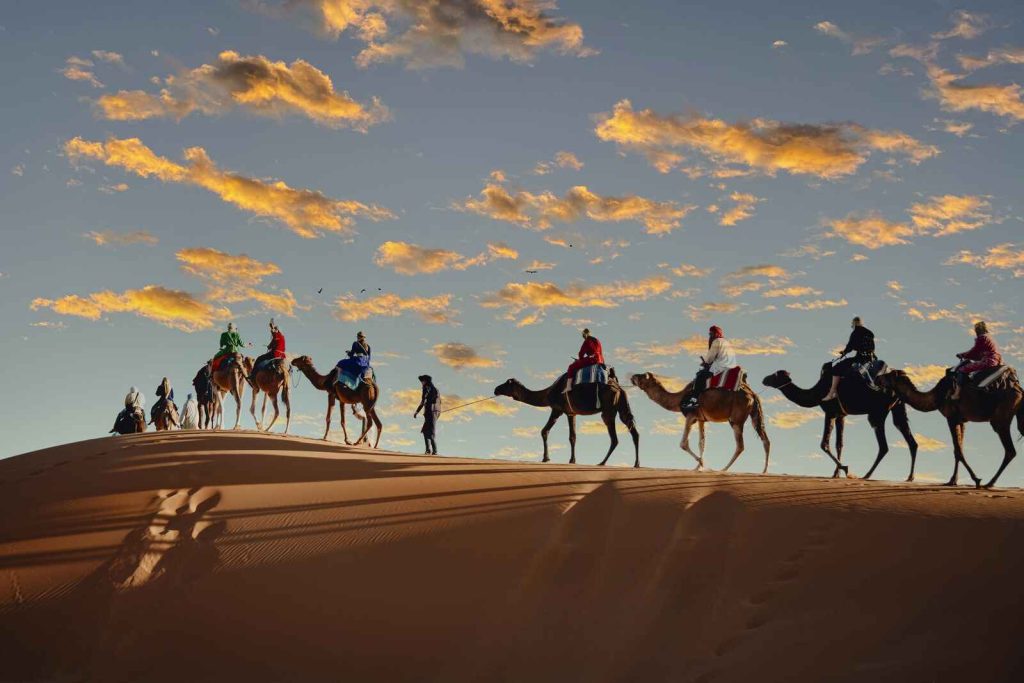
Culinary experiences also emphasize heritage over haute cuisine. Guests savor slow-cooked tagines prepared in clay pots buried in sand, freshly baked bread from outdoor mud ovens, and spiced couscous served communally. The emphasis is not on fusion, but on refinement—using local ingredients and traditional methods presented with elevated style.
Luxury travelers, once wary of discomfort, now seek these experiences not despite their cultural depth, but because of it. It’s no longer enough to see Morocco—they want to feel its heartbeat, taste its warmth, and be momentarily woven into its story.
Technology Meets Tranquility
What makes this desert transformation particularly 2025 is the seamless integration of technology with tradition. Wi-Fi in the dunes once seemed absurd, but now it’s part of the appeal: guests can share real-time moments without compromising atmosphere. Camps are increasingly powered by solar panels, their operations designed around low-impact principles. Water is conserved through innovative reuse systems, waste is managed sustainably, and many camps offer carbon offset programs as part of the package.
Luxury in the desert today isn’t about excess—it’s about elegance with ecological respect. Travelers, particularly millennials and Gen Z, respond positively to this intersection of comfort and consciousness. They want the sunrise meditation and the drone-shot camel line, but they also want to know their footprint is light and their experience supports local livelihoods. It’s a new definition of indulgence, where grace and groundedness coexist.
Who’s Traveling—and Why?
The demographic shift is also notable. Where once the Sahara drew mostly adventure seekers and budget backpackers, 2025’s desert camps host a mosaic of guests. Wellness-focused women’s retreats are on the rise, as are couples seeking an alternative honeymoon steeped in ritual and romance. Digital nomads looking for detachment without disconnection come for week-long sabbaticals. Even multigenerational families are now choosing the desert over the beach, drawn by its capacity to both entertain and enchant.
For many, the desert is a metaphor. It’s about stripping away the noise, confronting space, rediscovering quiet. In a world saturated with content, the desert offers contrast—texture, stillness, and meaning. One guest from Toronto described her desert experience as “the only place where silence felt full.” That kind of reflection is what brings people back—not the bells and whistles, but the emotional resonance.
The Future of Desert Luxury in Morocco
Looking ahead, Morocco’s luxury desert camps are poised not for expansion in size, but in depth. With increasing attention on sustainability, cultural preservation, and regenerative tourism, the next wave of desert travel will likely go even further into storytelling and slow immersion. Some camps are beginning to offer creative residencies for artists and writers, while others are partnering with historians and anthropologists to offer deeper cultural programming.
There’s also a growing interest in seasonal contrast—some camps are now encouraging winter visits for stargazing and thermal experiences, expanding the narrative beyond the summer camel ride. For Roamcox travelers seeking story-rich journeys that balance sensory indulgence with cultural depth, Morocco’s desert remains a treasure still unfolding.


